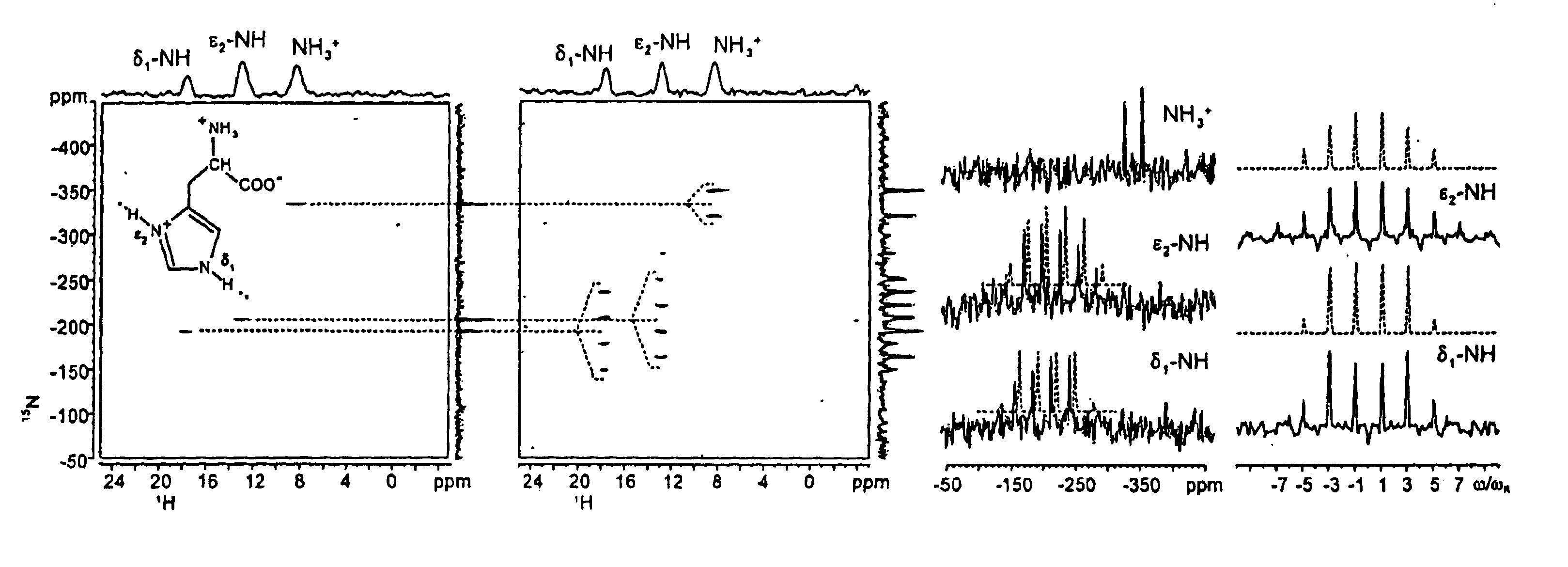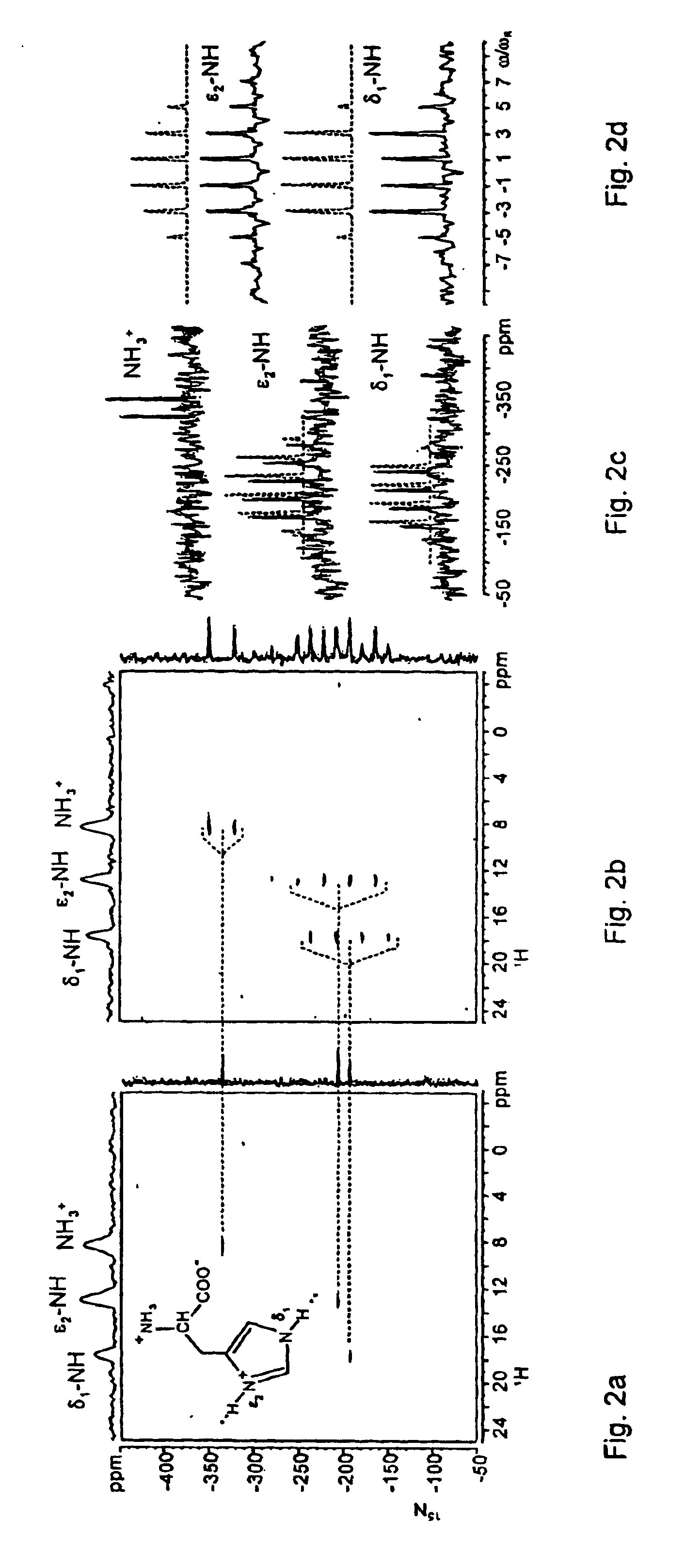Solid state NMR method with inverse detection
- Summary
- Abstract
- Description
- Claims
- Application Information
AI Technical Summary
Benefits of technology
Problems solved by technology
Method used
Image
Examples
Embodiment Construction
The invention was tested by experiments to determine 15N—1H binding lengths in natural abundance samples by means of inverse detection in solid-state NMR spectroscopy with fast MAS.
A 15N—1H solid state correlation NMR experiment is provided which considerably increases the signal sensitivity by inverse 1H detection and fast MAS to permit precise determination of NH binding lengths via hetero nuclear 1H—15N dipole-dipole couplings for samples having 15N in natural abundance. Pulsed field gradients or, alternatively, radio frequency pulses provide adequate suppression of undesired 1H signals. This method permits routine application of 15N—1H correlation NMR spectroscopy for solid state samples having natural isotope abundances in an experiment lasting a few hours. The dipolar coupling constants are determined from rotation sideband patterns, which are generated in the spectra by recently developed recoupling techniques. The information about 15N / 1H chemical shifts and quantitative 15N...
PUM
 Login to View More
Login to View More Abstract
Description
Claims
Application Information
 Login to View More
Login to View More - R&D
- Intellectual Property
- Life Sciences
- Materials
- Tech Scout
- Unparalleled Data Quality
- Higher Quality Content
- 60% Fewer Hallucinations
Browse by: Latest US Patents, China's latest patents, Technical Efficacy Thesaurus, Application Domain, Technology Topic, Popular Technical Reports.
© 2025 PatSnap. All rights reserved.Legal|Privacy policy|Modern Slavery Act Transparency Statement|Sitemap|About US| Contact US: help@patsnap.com



